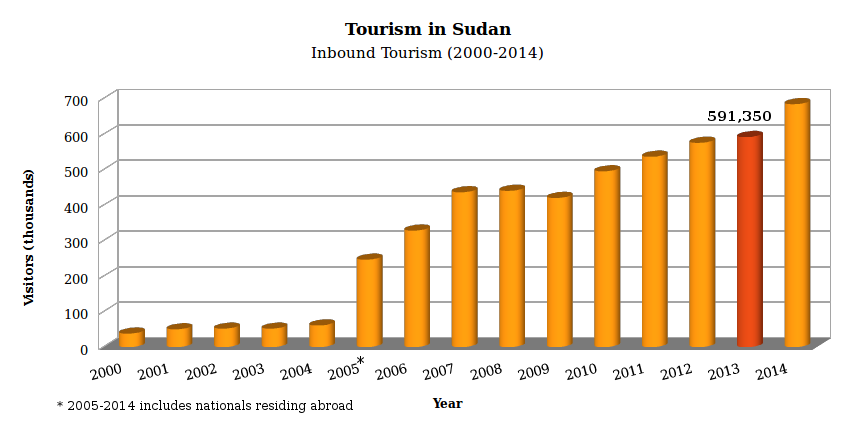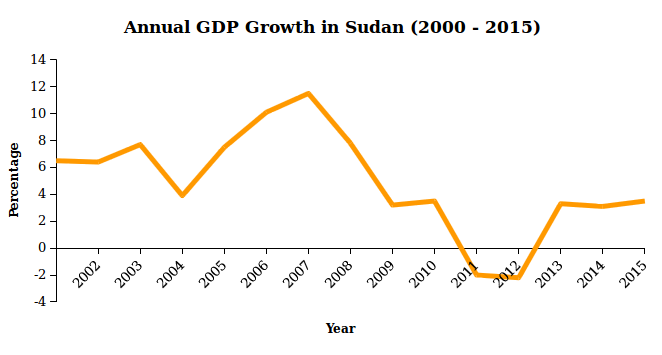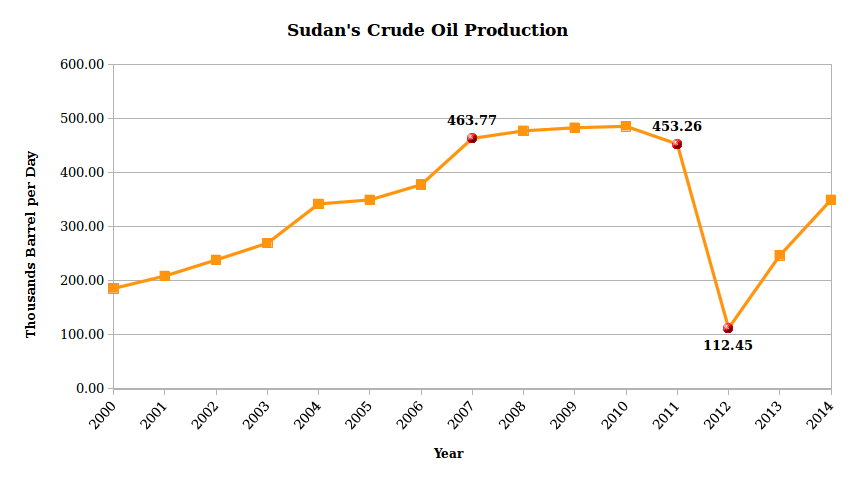-
INFRASTRUCTURE

Telecommunications
Supported by high oil revenues from 1999 to 2011, Sudan’s infrastructure improved markedly compared to the pre-oil period. That improvement had a strong impact on per capita growth, contributing 1.7 percentage points, according to a World Bank Report. The information and communication (ICT) revolution contributed most to Sudan’s growth. The country has invested heavily in infrastructure in recent years, with some notable achievements. For example, around 10.5 million Sudanese enjoyed internet access in 2014 according to the figures of Sudan Ministry of Communication. That is almost one fourth of the country population. In ICT, Sudan has made enormous strides in liberalizing the sector and thereby attracted significant private capital. Mobile penetration soared from less than one per cent in 2000 to 77 per cent by the end of 2015.
Roads
The road network of Sudan almost doubled in length, reaching 6,200 kilometres all of which was rolled out between 2000 and 2008. Nonetheless, much of the country still lacks roads. The huge expansion of the road network in Sudan is characterized by poor construction and lack of proper maintenance.
This lack of adequate roads negatively affects the production of agricultural and animal products, which are located in rural areas, as it impedes its access to both local and foreign markets, making it less competitive in regional markets by adding excessive transport costs.
The country is, however, connected by asphalted roads to three of its important neighbours, namely Egypt, Eritrea, and Ethiopia and to the borders of South Sudan, Chad, and the Central African Republic.
Railways
The railway system in Sudan is extensive, with about 4757 Kilometers of railroads across the country, to all major towns and cities. Sudan railways built by the invading British troops in late 19th century played a role in nation building and providing infrastructure for agriculture, trade, and industry until the mid-1970s. Since then, the railways have begun to deteriorate for lack of maintenance and renovation. It is currently operating at about one-fifth of its capacity. In 2016 Sudan railways transported 850 thousand metric ton of goods.
Many attempts to maintain and improve the railway network and its capacity were hindered by political instability and lack of funding, as well as suffering from political interference to curb the power of the strong railway trade unions. The railways were neglected by the government, which preferred to invest in less expensive land highways. In 2015, the railways are reported to have 60 locomotives in service, but they have a maximum speed of only 40 km per hour because of the poor state of the tracks.
The first serious step to modernize Sudan railways was made in 2014, with the help of China. The modern Chinese made Nile Train between Atbara and Khartoum is becoming very popular even though it take much longer than buses to make the trip because it is cheaper and safer.
Sudan government officials have also repeatedly talked about a project to build a railroad from Port Sudan on the Red Sea across the country the western neighbor Chad and later to Cameron for the cost of 2 billion dollars. China is again the suggested partner for this big project.
In 2015, President al Bashar, during his electoral campaign visited so-called ‘railway city’ Atbara, saying he was committed to expand the current railroad network.
River Transport
The Nile – consisting of the White Nile and the Blue Nile, provides an important inland transportation route and has played an important role historically. Its usefulness is, however, limited by several cataracts in the main Nile, between Khartoum and northern Sudan. The White Nile, south of Khartoum, has shallow stretches that prevent the passage of large barges. The Blue Nile is not very suitable for river transport and has two dams that make it less appropriate for river transport.
River Transport historically played a vital role in connecting North and South Sudan. That was hindered by the civil war of 1983-2005 and the Independence of the South. Recently President Bashir announced reopening of river transport to the South as a part of reconciliatory gesture towards the republic of South Sudan.
-
Agriculture

Agriculture
Agriculture is the most important economic sector in the country, creating 39 per cent of GDP, employing more than one third of the workforce, and producing 80 per cent of the country’s exports until the late 1990s when oil and gold to lesser extent, took over as the main export products .
Agricultural and animal products made up 75% of Sudan exports, until 1999 when oil became Sudan’s main export product. About 22% of imports are destined for agricultural production, including such inputs as machinery, fertilizers, and pesticides.
The modern economy of Sudan was established under the British colonial administration, which governed from 1899 to 1956. Upon first establishment of its rule, the British governor-general thought the farmers should grow wheat, but changed his mind thinking a better cash crop was needed. As a result, the administration made the long-staple cotton production production the centrepiece of Sudan’s economy. In 1913, the Condominium administration, at times adopting its own policy contrary to the British Government but in this case backed by the British government, raised a loan to finance the construction of a dam at Sennar, on the Blue Nile, which was completed in 1925 and improved crop irrigation. Additionally, the Gezira Scheme, located in the triangle of land south of the confluence of the two Niles, came into being. Ultimately covering an area of more than two million feddans, it was to become the world’s largest single farming enterprise under one management and the most important source of foreign revenue for Sudan for decades.
Another agricultural pillar of the modern economy of Sudan was constructed by the colonial state following the Second World War. Mechanized farming of sorghum (dura), the main food staple of the northern part of the country, began in 1945 near Gedaref, in eastern Sudan. The first mechanized crop-production scheme covered about 12,000 feddans. At independence in 1956, there were more than 300 private mechanized schemes covering about 388,000 feddans.
Rain-fed mechanized agriculture occupies a strip (estimated at 5 million hectares) of the clay plains in the high-rainfall savannah belt in central Sudan. The main rain-fed crops cultivated in Sudan are sorghum, sesame, peanuts, and, to a lesser extent, cotton and sunflower seeds.
Cotton is the principal export crop in both rain-fed and irrigated sectors and an integral part of the country’s economy, and Sudan is the world’s third largest producer of sesame seed, after India and China. Sugarcane is also a very important crop on which the large sugar industry of Sudan depends. According to the Annual report of Sudan Central Bank of 2014 irrigated agriculture amounted to 3.3,million feddans while rain-fed agriculture reached 36 million feddans.
Dependency on oil and neglecting investing on agriculture after 1999 led to a sharp fall agricultural products export from 75% in 1995 to only 30% in 2014. The production of cereals, sorghum, millet and wheat declined in 2010 reached the total of only 2.9 million metric tons compared to 4.9 million metric tons in 2006-09 with the decline of nearly 42%.
Animal Production
Animal husbandry is an important part of the national economy. Its production increased during recent years because of better veterinary treatment, more liberal credit policies, and higher market prices.
Livestock is raised in all parts of Sudan mainly by pastoral and agro-pastoral groups, with the former dependent on livestock and the latter on both livestock and cultivation. The Sudan Ministry ofAnimal Resources estimated in 2011 that there are 103 million head of livestock; 28.6 million cows, 39.2 million sheep, 30.7 million goats and 4.7 million camels. More than 55% of these animals are raised in Darfur and Kordofan, with herd size varying from below fifty head to a few thousand per household.
The livestock sector of Sudan provides livelihood for about 17% of the population. Sudanese livestock products meet the domestic demand for meat in addition to a substantial excess for export both amounting to about 25% of total country exports in 2015
-
Oil in Sudan

History of Oil in Sudan
Oil exploration in Sudan began in 1959, when Agip, an Italian oil company, was given a concession in the Red Sea area in north eastern Sudan; no oil was found. Many other European companies explored for oil and gas in Sudan, without success.
The US oil giant Chevron began operations in Sudan in 1975, with a large concession mainly in Western Kordofan and Western Upper Nile. Chevron succeeded in two fields, Abu Jabra and al-Sharaf, on the border between Darfur and Kordofan. They soon made major discoveries in Western Upper Nile, near Bentiu, and developed the Muglad Basin, where they found two huge oil fields, Unity and Heglig, both now in a disputed area between Sudan and South Sudan.
Chevron halted operations in Sudan 1984, after attacks by the southern rebels of the Anyanya II movement, and probably also because oil prices dropped to historical lows, which made Chevron’s investments in Sudan less feasible.
At that time, it was decided that the newly discovered oil would be exported through a pipeline to be built from oil fields to the Red Sea.
This meant that most of the oil infrastructure would be built in the north. In June 1992, following the 1989 coup, Sudan’s President Bashir announced that Concorp International, a small company owned by a Sudanese businessman closely tied to the ruling party had bought the Chevron concession.
Oil exploration and export from an area devastated by civil war continued, with exorbitant human and environmental costs. The Sudanese government wanted to obtain oil at whatever it costs; even if it meant harming the environment. The SPLA rebel movement wanted to stop these efforts, leading to conflict between the two parties. In the process, the Sudanese army in 1992-1993 created an area completely devoid of civilian life, stretching for kilometres beyond the oil fields and related facilities.
Twelve-Year Oil Boom
The first shipment of Sudan crude oil was loaded aboard a Shell tanker at Marsa Bashyer on the Red Sea (18 km south of Port Sudan) on 31 August 1999, marking the beginning of twelve years of unprecedented economic growth. Sudan’s oil production peaked at an average of almost 500,000 barrels per day in 2007, before falling back somewhat in 2008-2009. It reached only about 125,000 bpd after the independence of South Sudan in 2011, putting an end to the ‘boom’ years because around 75% of oil and production was coming from oilfields in the present Republic of South Sudan, while 90% of pipelines and export facilities are in (North) Sudan.
The 1540-km oil-export pipeline from the oilfields locate in southern Kordofan in Sudan and the states of Upper Nile and Bahr el Ghazal, in the present Republic of South Sudan, to a marine export terminal on the Red Sea, was built by GNPOC, a consortium of Chinese, Malaysian, and European companies, for 1 billion USD.
The signing of the Comprehensive Peace Agreement in January 2005 and the cessation of hostilities between Sudan and now South Sudan, improved oil production and export. The agreement stipulated that oil produced in the south be divided 50/50 between the government in Khartoum and the regional government of the south, in Juba. After independence, tensions between the two Sudans flared on the issues of transit fees for South Sudan’s oil to the north and the demarcation of the border and disputed areas between the two countries, including the oil-rich territory of Abyei.
-
Trade

Trading
In 2013, Sudan exported USD 3.92 billion in goods and imported USD 7.83 billion, resulting in a negative trade balance of USD 3.91 billion. The main exports of Sudan are crude petroleum (USD 2.43 billion), sheep and goats (USD 423 million), oil seeds – other than sesame (USD 377 million), insect resins – which is gum Arabic (USD 117 million) and gold (USD 73.3 million); top imports are wheat (USD 683 million), raw sugar (USD 464 million), medicines (USD 260 million), cars (USD 196 million), and rubber tyres (USD 144 million).
Sudan’s top export destinations are China (USD 1.92 billion), Saudi Arabia (USD 516 million), Japan (USD 412 million), India (USD 306 million), and South Korea (USD 116 million). The top import origins are China (USD 2.39 billion), India (USD 832 million), Egypt (USD 526 million), Saudi Arabia (USD 518 million), and Germany (USD 298 million).
Trade Embargo
Economic sanctions were imposed in 1997 for political and human rights reasons, having a crippling effect on the already fragile economy of Sudan. By impeding foreign trade and import of vital spare parts for industry and transport, particularly railway rolling stock and aircraft, economic growth was noticeably impaired, but daily life also strongly affected.
The first sanctions were imposed on Sudan as the result of the military coup and controversial foreign policy supporting the Iraqi invasion of Kuwait in 1990, and the Sudanese government supporting Saddam Hussein of Iraq. In 1994 the EU imposed arms sanctions, responding to the outbreak of war in Darfur. More sanctions and a trade embargo by United States were imposed on Sudan in November 1997, in response to the terror attacks on its embassies in Kenya and Tanzania by Osama Bin Laden’s al Qaeda – at the time enjoying refuge in Sudan. Noteworthy is the fact that gum Arabic – essential ingredient to soft drinks, was exempted as a result of food industry lobby work. The EU followed suit with economic sanctions and freezing of funds.
An increasingly long list of accusations related to human rights violations and harbouring of terrorists led the United States to list Sudan as a state sponsor of terrorism. The United Nations Security Council imposed an arms embargo and travel ban on Sudan in 2005. While Sudan was removed from the list of state sponsors of terrorism, sanctions remain in place. Travel to the nation is possible, however.
The US embargo prevented Sudan from easing the burden of its USD 40 billion in foreign debts. Sanctions also harmed the petroleum and petrochemical industries by prohibiting American and other companies from providing oilfield services, oil and gas pipeline facilities, machinery, and chemicals.
-
Banking

Banking
There are 34 banks operating in the country, sixteen of which are wholly or majority owned by private shareholders, seven state-owned commercial banks, four other state-owned banks providing finance for specific sectors of the economy, and two investment banks.
Most banks in Sudan adhere to Islamic banking principles, providing financial products that are structured to comply with Islamic law (Sharia). In practice, though these banks claim that they do not charge interest on loans and financing trade, administrative and other fees imposed by the Islamic banks are always much higher than the prevailing rate of interest of ordinary banks. Most commercial banks in Sudan invest mainly in local and partially foreign-trade financing, with limited resources allocated to finance agriculture and industry.
International sanction against Sudan and restrictions on financial dealings with Sudan placed extreme limitations on Sudanese banks from accessing international banking and financing trade. Sudanese banks can only transfer and receive money from abroad through intermediary banks in Saudi Arabia. In addition, United Arab Emirates, which made the country prone to financial and political pressure. Tourists traveling in Sudan cannot use their own banking cards as Sudan is blocked from such dealings.
Another example for the impact of the sanctions on banking as mentioned earlier, is that two French companies who were busy with gold mining in Sudan for decades, were forced to sell their shares and leave Sudan 2015 as the result of international sanctions against Sudan, as French banks declined to receive money transfers from Sudan.
Trade Embargo
Economic sanctions were imposed in 1997 for political and human rights reasons, having a crippling effect on the already fragile economy of Sudan. By impeding foreign trade and import of vital spare parts for industry and transport, particularly railway rolling stock and aircraft, economic growth was noticeably impaired, but daily life also strongly affected.
The first sanctions were imposed on Sudan as the result of the military coup and controversial foreign policy supporting the Iraqi invasion of Kuwait in 1990, and the Sudanese government supporting Saddam Hussein of Iraq. In 1994 the EU imposed arms sanctions, responding to the outbreak of war in Darfur. More sanctions and a trade embargo by United States were imposed on Sudan in November 1997, in response to the terror attacks on its embassies in Kenya and Tanzania by Osama Bin Laden’s al Qaeda – at the time enjoying refuge in Sudan. Noteworthy is the fact that gum Arabic – essential ingredient to soft drinks, was exempted as a result of food industry lobby work. The EU followed suit with economic sanctions and freezing of funds.
An increasingly long list of accusations related to human rights violations and harbouring of terrorists led the United States to list Sudan as a state sponsor of terrorism. The United Nations Security Council imposed an arms embargo and travel ban on Sudan in 2005. While Sudan was removed from the list of state sponsors of terrorism, sanctions remain in place. Travel to the nation is possible, however.
The US embargo prevented Sudan from easing the burden of its USD 40 billion in foreign debts. Sanctions also harmed the petroleum and petrochemical industries by prohibiting American and other companies from providing oilfield services, oil and gas pipeline facilities, machinery, and chemicals.



















